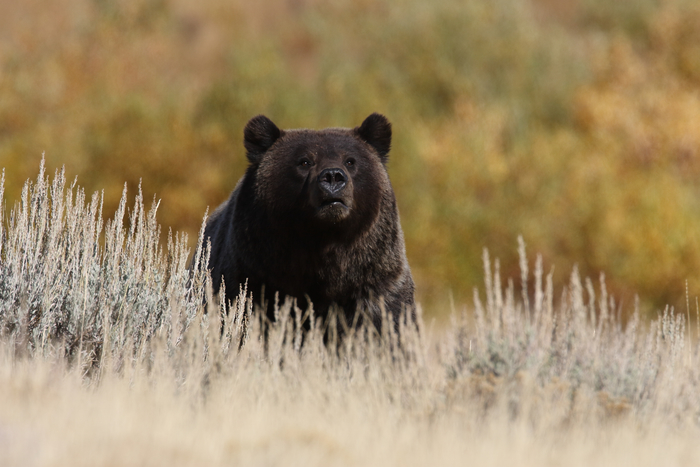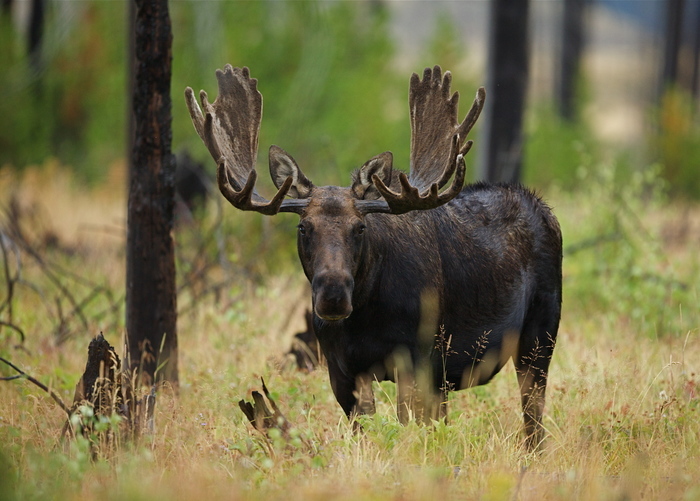Welcome to Habibi Tour
OFFICIAL BLOG OF HABIBI WORLD TRAVEL & TOUR
North America- Wild Yellowstone: Saving All The Parts
North America- Wild Yellowstone: Saving All The Parts
Wild Yellowstone: Saving All The Parts
By Hobie Hare

This past September, I was fortunate to have guided a group of twelve Las Almas Tour & Travel clients on a wildlife watching expedition in Yellowstone National Park. We lucked out with weather and with wildlife sightings, and it was wonderful to focus on just one national park and ecosystem over six days, too.
What I love most about guiding is helping people connect the dots, and better understand the importance of protecting all the parts of a particular ecosystem. Of all the places where I guide, I know Greater Yellowstone the best, yet there’s always far more to learn, know and understand as this and other dynamic wild regions change over time.

Our conversations that week centered around how wildlife is perceived and treated within and outside of national park boundaries, and how things that happen in one location within an ecosystem have a profound impact everywhere within it. A quick example here: Whitebark pine trees in Greater Yellowstone inhabit a narrow zone of life at higher altitude. With climate change, whitebark pines have become more vulnerable to blister rust, pine beetle infestation and other challenges. These trees cannot easily and quickly adapt by moving to even higher elevations as the climate continues to rapidly warm.
Whitebark pine trees produce high fat content seeds, or nuts, about every four to five years. When there’s a robust year, grizzly bears gorge on them from late summer into early fall, often raiding stash piles cached by pine squirrels and Clark’s nutcrackers. Grizzlies tend not to range as far out in the Greater Yellowstone when nuts and seeds are unusually abundant; in lean years they travel into more human impacted areas in search of alternative food sources.

And this is when grizzlies get into trouble. Unsecured pet and livestock food entice them onto people’s property throughout the ecosystem, as do apple orchards, gardens, compost piles and garbage. Hunters who do not promptly gut and remove their kills outside park boundaries can also contribute to grizzly-human encounters, triggering tragic outcomes for all parties.
In short, a fed bear is a dead bear when it comes into contact with people. The challenge is two-fold: making it hard for bears to get human food rewards, and preserving wild areas beyond the boundaries of national parks for bears and other wide-ranging animals to make a living over the course of their lifetimes.
On our last full day together, our group traveled a rugged rural road outside the park, hoping to glimpse an elusive moose, and perhaps one more grizzly. We first saw a massive bull moose appear several hundred yards away before he ventured into a dense thicket of willows. Afterwards we drove to where we could more easily and safely turn around, and to our surprise witnessed a grizzly bear shredding open a log not far from where the moose had been standing.

The bruin definitely sensed that we were there watching, but continued feeding upon whatever inhabited the rotting log. Unlike earlier wildlife sightings together this wasn’t a busy “animal jam” where crowds gathered to see a bear—it was just our small group seeing how powerful, vigilant and intent it was to gorge on everything possible before winter fully set in.
Witnessing a grizzly roam freely outside of Yellowstone drove home the importance of preserving places outside the park for the sake of grizzly bears and all wildlife species, and for future human generations to experience and enjoy as well.
The bruin’s presence was an enduring gift. It helped us rekindle a more profound and meaningful link with the natural world from where we all came, and forge even deeper bonds with one another. The following morning, everyone departed for home from Bozeman, inspired and re-energized to strengthen our natural bonds and connections.


Join Hobie on a nature tour of Yellowstone
Learn from Hobie Hare on our Essence of Yellowstone and Grand Teton guided group tour June 13-18, 2020. Yellowstone and Grand Teton National Parks are the focus of this tour, which are adjacent yet offer such complementary landscapes and opportunities. The combination of abundant wildlife, unique geothermal activity and sheer beauty is simply unmatched.
When you book with Habibi World Travel & Tour and partners on a small group adventure or private individual trip, you can be confident that your trip will be sensitive and appropriate and that you will be a welcome guest. Contact us to find out more!
Posted on February 24, 2020 | Sense of Place, Travel Notes, Wildlife and Nature
Afoot
Conservation
People
Ranch Vacations
Sense of Place
Travel Notes
Wildlife and Nature

The bruin definitely sensed that we were there watching, but continued feeding upon whatever inhabited the rotting log. Unlike earlier wildlife sightings together this wasn’t a busy “animal jam” where crowds gathered to see a bear—it was just our small group seeing how powerful, vigilant and intent it was to gorge on everything possible before winter fully set in.
Witnessing a grizzly roam freely outside of Yellowstone drove home the importance of preserving places outside the park for the sake of grizzly bears and all wildlife species, and for future human generations to experience and enjoy as well.
The bruin’s presence was an enduring gift. It helped us rekindle a more profound and meaningful link with the natural world from where we all came, and forge even deeper bonds with one another. The following morning, everyone departed for home from Bozeman, inspired and re-energized to strengthen our natural bonds and connections.


Join Hobie on a nature tour of Yellowstone Learn from Hobie Hare on our Essence of Yellowstone and Grand Teton guided group tour June 13-18, 2020. Yellowstone and Grand Teton National Parks are the focus of this tour, which are adjacent yet offer such complementary landscapes and opportunities. The combination of abundant wildlife, unique geothermal activity and sheer beauty is simply unmatched.
When you book with Habibi World Travel & Tour and partners on a small group adventure or private individual trip, you can be confident that your trip will be sensitive and appropriate and that you will be a welcome guest. Contact us to find out more!
Posted on February 24, 2020 | Sense of Place, Travel Notes, Wildlife and Nature

